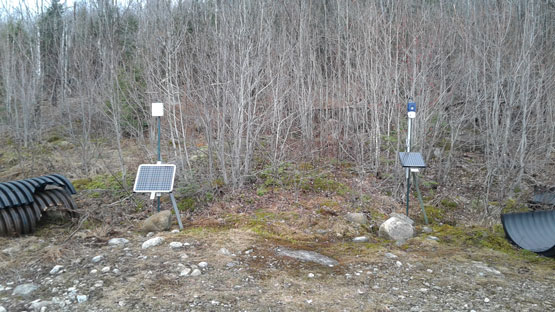August 10, 2023
Millions of people worldwide can now recognize the burnt smell, the thick smoke, and the red haze of a fire burning kilometres away. With the effects of climate change increasing their number, frequency, and intensity, wildfires have spread across Canada at an unprecedented rate. We are in the middle of the worst wildfire season yet, with 5530 recorded in 2023 to date.
To help confront this threat, Defence Research and Development Canada (DRDC) is working on a technology that could help detect wildfires sooner, allowing decision-makers and responders to spring into action faster.
Early detection of ignitions is key to limiting the spread of wildfire and mitigating the harm done to nearby communities. Real-time awareness from a network of ground sensors would provide responders with the necessary information to act earlier and more effectively. The United States Department of Homeland Security Science and Technology Directorate (DHS S&T) is testing wildfire ground sensors as part of their second phase of development. DRDC has deployed twenty of these sensors at Canadian Forces Base Valcartier where they were successful in detecting small wildfires. Twenty additional sensors were also deployed at the City of Baie-Comeau.

Fire sensors set up in a Québec forest.
The sensors detect the levels of small ash-like particles (particulate matter) and volatile organic compounds (VOC) (i.e., carbon monoxide) that are in the air. These levels are then input into sophisticated computer algorithms that can determine whether the levels of particulate matter and VOCs correspond to an actual fire or a false alarm.
The deployment has three main goals:
- identify the best placement for the sensors to maximize range and detection speed;
- gain understanding on how the use of the ground sensors in conjunction with other detection capabilities such as satellites, better protects communities; and
- improve the sensors’ user interface so they can be adaptable to different contexts and users.
Developing solutions that will enable adaptation and resiliency will ensure Canada is prepared for the ongoing effects of climate change. In addition to our DHS S&T partners, DRDC is undertaking this forward-looking initiative with the Canadian Forest Service at Natural Resources Canada, the Canadian Forces Fire Marshall, and SOPFEU (Société de protection des forêts contre le feu), the Québec wildfire agency.
With these trials, DRDC is using innovation to secure a safer future for all Canadians.
